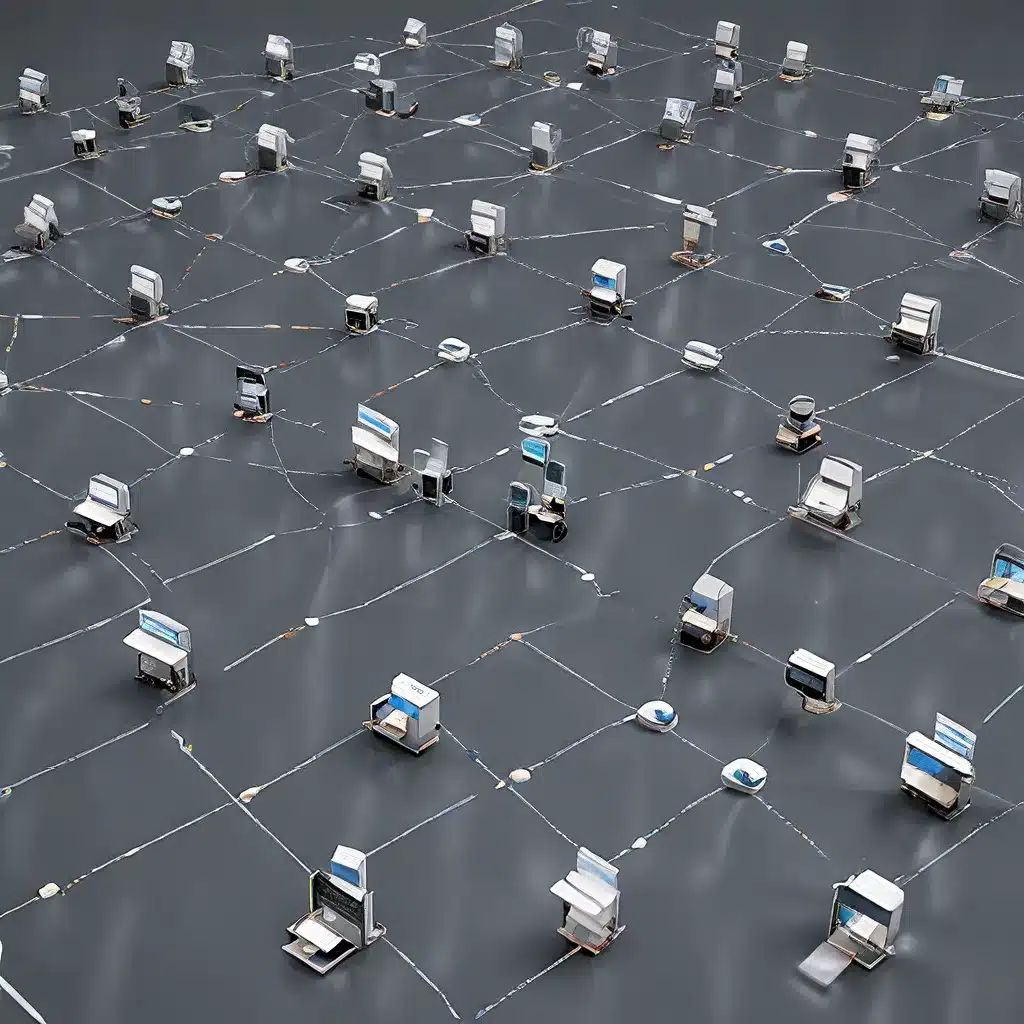
Unlocking the Potential of Sensor Networks: Calibration Algorithms for Resilience and Fault-Tolerance
Sensor networks have become increasingly prevalent in a wide range of applications, from environmental monitoring to industrial automation and smart cities. These interconnected arrays of sensors collect vast amounts of data, offering valuable insights and enabling data-driven decision-making. However, the reliability and accuracy of these sensor networks are of paramount importance, as faulty or uncalibrated sensors can lead to erroneous data, compromising the integrity of the entire system.
To address this challenge, researchers have developed distributed sensor calibration algorithms that play a crucial role in ensuring the resilience and fault-tolerance of wireless sensor networks. These algorithms enable sensors to self-calibrate, adjusting their measurements to maintain accuracy and consistency, even in the face of environmental changes, sensor drift, or network disruptions.
Recent research has highlighted the importance of these calibration algorithms in building robust and adaptable sensor networks. By leveraging distributed processing and collaborative calibration, sensor nodes can collectively maintain accurate measurements, minimizing the impact of individual sensor failures or calibration drifts.
Enhancing Sensor Network Reliability through Distributed Calibration
One of the key advantages of distributed sensor calibration algorithms is their ability to adapt to dynamic environments. Sensor networks often operate in complex, ever-changing settings, where factors such as temperature, humidity, or physical disturbances can affect sensor performance over time. Traditional centralized calibration methods struggle to keep up with these fluctuations, as they rely on manual intervention or periodic recalibration.
Distributed algorithms, on the other hand, enable continuous self-calibration, where sensors continuously monitor their own performance and collaborate with neighboring nodes to maintain accurate measurements. This self-healing capability ensures that the sensor network as a whole remains resilient and fault-tolerant, even in the face of individual sensor failures or environmental changes.
Researchers have developed various distributed calibration techniques, such as consensus-based algorithms, Kalman filter-based methods, and Bayesian estimation approaches. These algorithms leverage the interconnectivity of sensor nodes to collectively determine the true underlying values, effectively compensating for sensor biases, drifts, or measurement errors.
By distributing the calibration process across the network, these algorithms reduce the reliance on a central coordinator or control point, making the system more robust and less vulnerable to single points of failure. This decentralized approach also enhances scalability, as the network can easily accommodate the addition or removal of sensor nodes without the need for extensive reconfiguration.
Practical Applications of Distributed Sensor Calibration
The applications of distributed sensor calibration algorithms span a wide range of industries and domains, each with unique challenges and requirements. Let’s explore some of the key areas where these algorithms have made a significant impact:
Environmental Monitoring
Environmental monitoring is a crucial application of sensor networks, where accurate data is essential for understanding and responding to changes in air quality, water resources, wildlife habitats, and more. Distributed calibration algorithms enable sensor networks to maintain reliable measurements even in the face of environmental fluctuations, ensuring that the collected data remains trustworthy and actionable for environmental researchers and policymakers.
Industrial Automation
In the industrial sector, sensor networks play a vital role in process monitoring, quality control, and predictive maintenance. Distributed calibration algorithms ensure that sensor data remains accurate and consistent, allowing for real-time decision-making and optimized production processes. This leads to improved efficiency, reduced downtime, and enhanced product quality.
Smart Cities
Smart city initiatives leverage sensor networks to monitor and manage various urban systems, such as traffic, energy consumption, waste management, and public safety. Distributed calibration algorithms contribute to the reliability and resilience of these sensor-driven systems, ensuring that critical data remains accurate and dependable for city planners, policymakers, and citizens.
Ensuring Sensor Network Security and Energy Efficiency
As sensor networks become more ubiquitous, security and energy management have emerged as crucial considerations in their design and deployment. Distributed sensor calibration algorithms play a role in addressing these challenges, complementing other security and energy-efficient measures.
Security Implications
Sensor network security is a significant concern, as these systems can be vulnerable to cyber attacks, data tampering, or unauthorized access. Distributed calibration algorithms can contribute to enhanced security by detecting and mitigating sensor anomalies that may indicate malicious activity. By continuously monitoring sensor performance and cross-checking measurements, these algorithms can identify and isolate compromised nodes, minimizing the impact of security breaches on the overall system.
Energy Management Considerations
Energy efficiency is another critical aspect of sensor network design, as these systems often rely on battery-powered or energy-harvesting sensor nodes. Distributed calibration algorithms can help optimize energy consumption by reducing the need for periodic manual recalibration and minimizing the computational burden on individual sensors. By distributing the calibration tasks across the network, these algorithms enable sensors to conserve energy and extend their operational lifespan, contributing to the sustainability of the overall sensor network.
Conclusion: The Future of Sensor Networks and the Role of Distributed Calibration
As the sensor network and IoT landscape continues to evolve, the importance of distributed sensor calibration algorithms will only grow. These resilient and fault-tolerant algorithms are poised to play a pivotal role in unlocking the full potential of sensor networks, ensuring their reliability, security, and energy efficiency across a wide range of applications.
By embracing distributed calibration techniques, sensor network deployments can become more adaptable, self-healing, and scalable, empowering researchers, engineers, and policymakers to harness the wealth of data generated by these interconnected systems. As the sensor network ecosystem continues to evolve, the advancements in distributed sensor calibration algorithms will be a key driver in shaping the future of IoT and smart technologies.